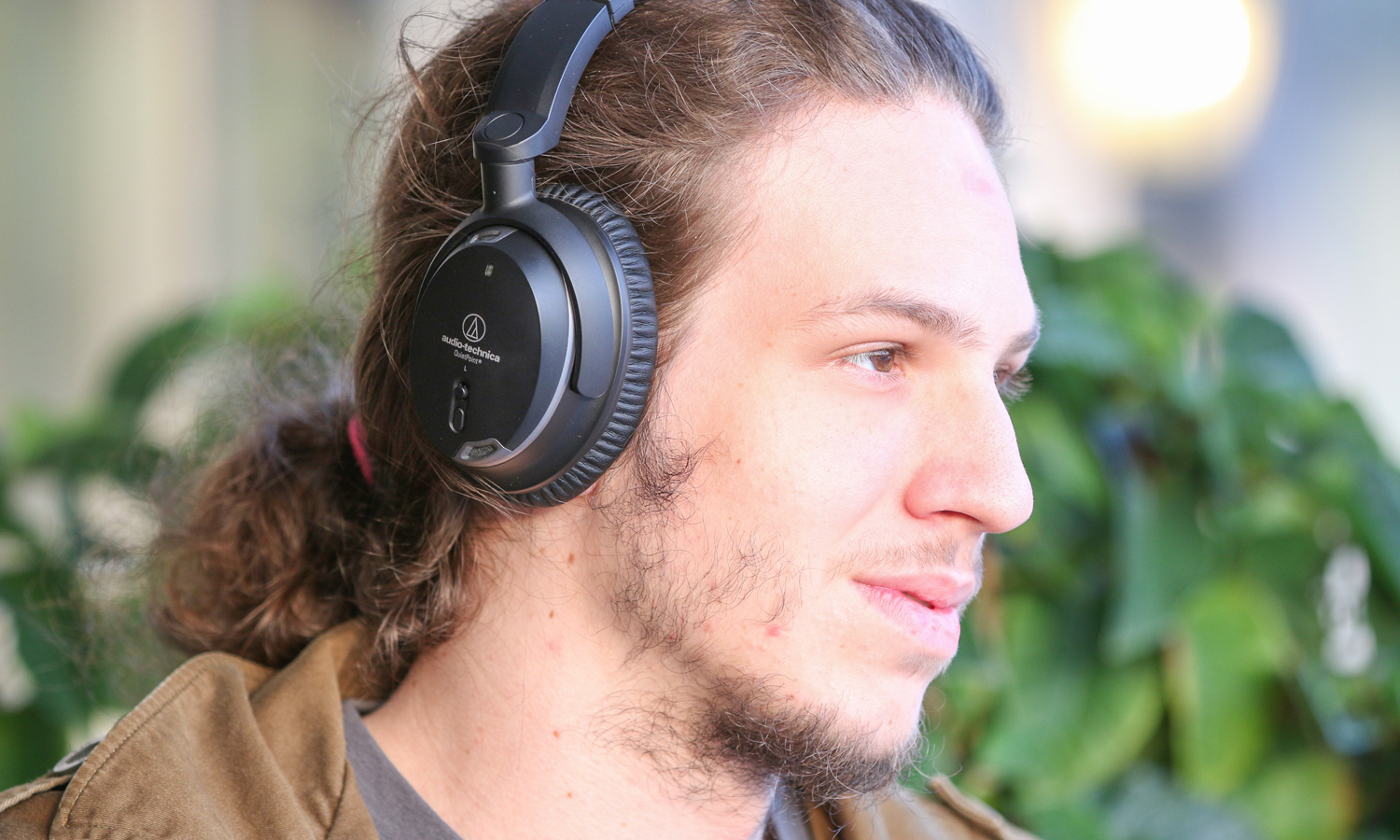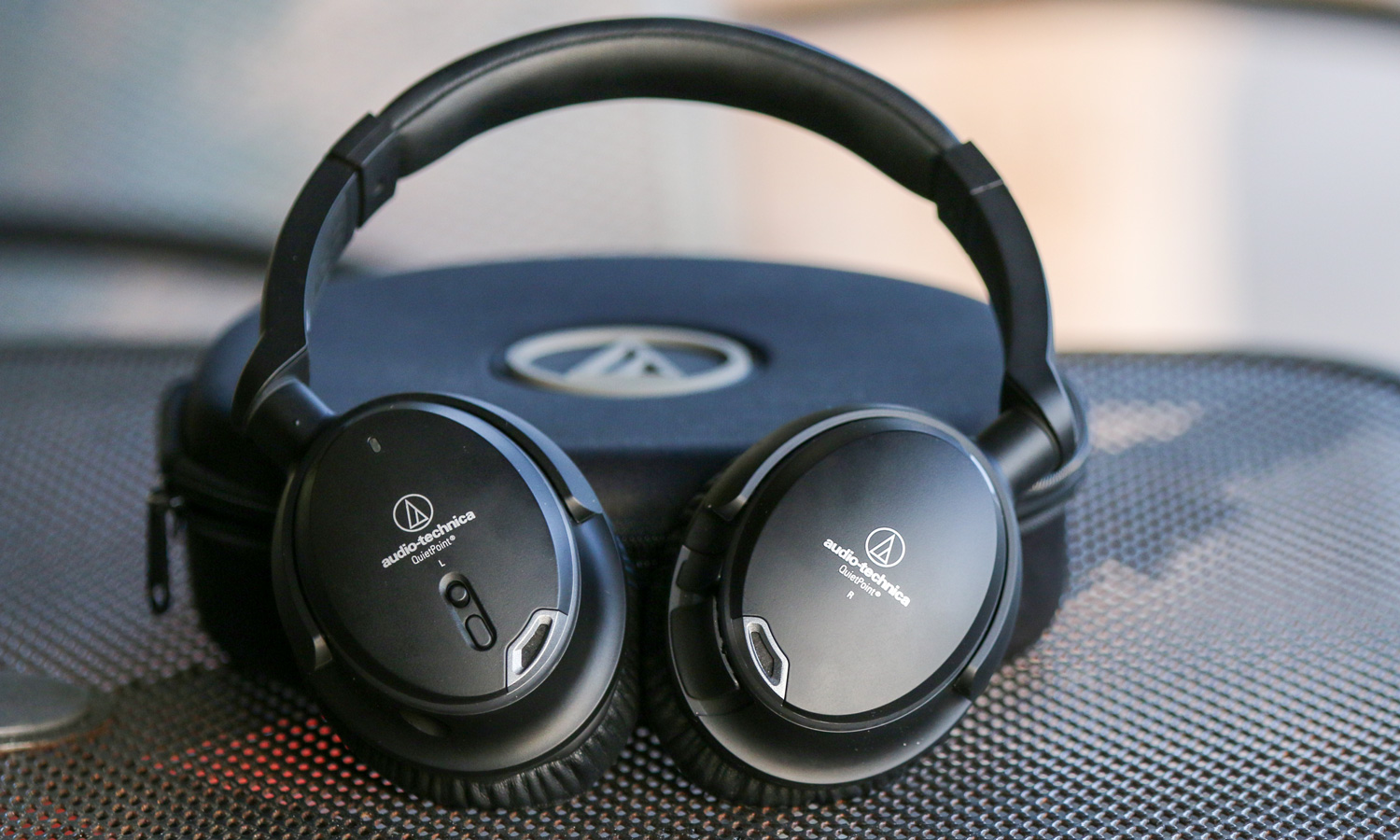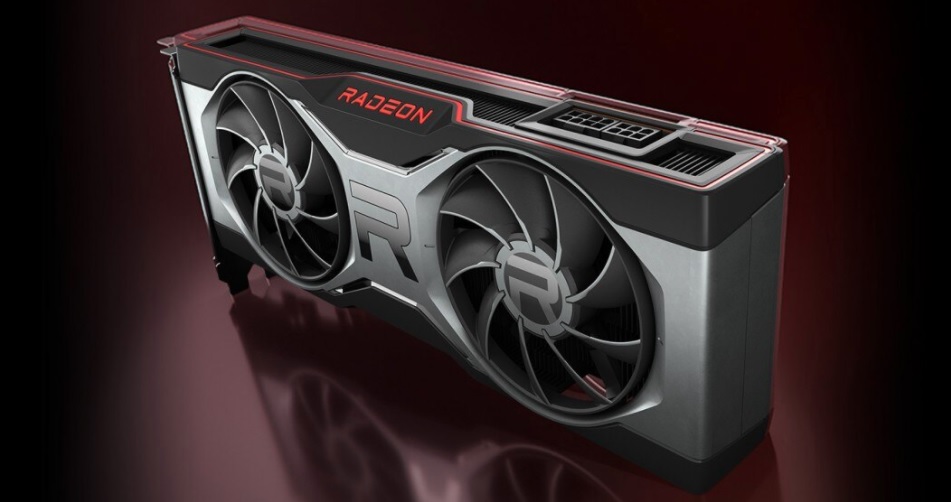Tom's Guide Verdict
The Audio-Technica ATH-ANC9 headphones offer balanced sound without any frills but with superior noise-cancelling performance.
Pros
- +
Comfortable, over-ear design for long listening sessions
- +
Three modes of active noise cancellation
- +
Balanced sonic profile
Cons
- -
ANC circuit powered by AAA battery
- -
Lacks automatic-shut-off feature for ANC
- -
Design doesn't wow
Why you can trust Tom's Guide
The $119 Audio-Technica ATH-ANC9 over-ear headphones offer a no-frills wired design with stellar active noise cancelling (ANC) performance, balanced sound and a price tag that isn't too hard to swallow. While they likely won't turn any heads, their muted design won't make you feel uncomfortable on the bus, train or airplane either.
Design
The Audio-Technica ATH-ANC9 features one of the plainest-looking headphone designs I've ever seen. While other models use glossy finishes and chrome accents to stand out, the ATH-ANC9 relies on a relatively generic looking, black-matte-plastic design with only small, dark-silver accents on the outside of the ear cups. The build quality feels good, and despite being almost entirely plastic, the headphones don't sound creaky — even when you're twisting and flexing the headband and ear cups.
Along the exterior of the left ear cup, you'll find the active noise cancellation on/off switch and a button that changes which mode of ANC the headphones use. At the top of the left ear cup is an LED light that flashes blue, red or green depending on which mode is activated.
Unlike some of the other models that employ a folding mechanism, the ear cups on the Audio-Technica ATH-ANC9 simply swivel 90-degrees, allowing them to lie flat in their hard, black case. Inside, sits a pouch that holds the two pairs of included cables, one-eighth to one-fourth inch adapter and a (somewhat less relevant) two-prong plane adapter Velcroed to the inside of the case.
Comfort
When I first wore the ATH-ANC9s, I felt they put slightly too much pressure on my jaw. However, after I used them for a few weeks, they felt fairly comfortable.

The replaceable ear pads and synthetic leather headband were generally cozy during multiple listening sessions lasting a few hours each. The leatherette is also quite soft, and the ear cups do a decent job of blocking out some outside noise.
Unlike many of the other noise-cancelling headphones I've tested, the ATH-ANC9s are wired and employ a removable cable. You get two cords, one with a microphone and in-line track-control module and the other as a straight audio cable.
Controls
Using the ATH-ANC9 is straightforward, with very few controls or settings to change. Removing the sled to add the batteries and reinserting it into to the right ear cup takes about a minute. When you're ready to rock, just plug in one of the two included cables to the device and headphone jack.
Using the Airplane mode on the Audio-Technicas, there was a significant decrease in the droning rumble common with air travel compared to what I got with the Sennheisers.
To activate the ANC switch on the left ear cup, you simply slide it upward. Pushing the button below that switch will toggle the modes among Airplane, Office and Study. The status light at the top of the ear cup will change accordingly, and the headphones will emit a single, double or triple beep to indicate which mode is engaged.
Active Noise Cancellation
The active noise cancelling on the ATH-ANC9 is quite good. I compared this headset to the Sennheiser 4.50 BTNC on a recent 3-hour flight to New York City, and the Audio-Technicas blew me away. In fact, it felt like it wasn't a fair comparison, given how much better the Audio-Technica performed.
MORE: Best Headphones and Earbuds for Enjoying Music
Using the Airplane mode on the Audio-Technicas, there was a significant decrease in the droning rumble common with air travel compared to what I got with the Sennheisers, where the drone was still somewhat audible. According to Audio-Technica, the Airplane mode cancels 95 percent of noise at 200 Hertz, the Office mode cancels 95 percent at 300Hz, and the Study mode blocks out 85 percent at 200Hz. Overall, I found myself using the Airplane mode most often, with Study a close second.
Audio Quality
The ATH-ANC9s might not be the prettiest over-ear headphones, but their 40mm drivers provide listeners with an overall balanced sound profile. These headphones offered a full audio experience without being harsh in the upper register or too booming in the lower bass region. I did notice that with the ANC circuit turned off, some songs sounded a little hollow on occasion. Activating the ANC offered a slight bump in volume (+1 to 2 decibels) and, as expected, removed some outside noise, including the low whir of moving air from my ceiling fan and the road noise from traffic passing outside my window.
Israel Kamakawiiwo'ole's version of "Somewhere Over the Rainbow" sounded light and airy through the Audio-Technica headphones. I've listened to this track hundreds of times, but this was the first time I could hear Brother IZ (as he is more commonly known) breathe during the opening moments and throughout the song, subtly audible behind the singer's ukulele. The instrument sounded a bit more muted and not as bright or lively with the Audio-Technicas as it did with the Sennheisers.
The ATH-ANC9s might not be the prettiest over-ear headphones, but their 40mm drivers provide listeners with an overall balanced sound profile.
Switching to something more modern, Nigel Stanford's "Automatica" layers multiple instruments, including bass guitar, piano, drums, synthesizer and turntable for scratching into a melodic track played by robots.
Compared to V-Moda's Crossfade M-100, the Audio-Technicas offered a slightly more balanced and natural sound, as V-Moda tends to goose the low frequencies a bit. In contrast to both the Sennheisers and the V-Moda models, the Audio-Technicas also played at a slightly lower volume, even when my phone was set to the same level.
The opening sequence of the All American Rejects' "Move Along" is filled with two bars of an aggressive low tom-tom fill before the addition of a bass guitar and the melody played by the guitar. The ATH-ANC9s capture all of the resonance of the opening drum sequence as well as the slightly raspy, punk-rock voice of lead singer Tyson Ritter. But the same track on the Sennheisers sounded fuller and more energetic.
Battery Life
As previously mentioned, the ATH-ANC9s use an AA battery to power the active noise-cancellation circuit versus the Sennheisers, which have a rechargeable battery built in, powered by a micro USB.
MORE: I Spent More Than $200 on Headphones: You Should Too
Audio-Technica claims the headphones will last up to 35 hours. But I found myself burning through batteries on multiple occasions after forgetting to turn the headphones off following a jam session. This is definitely frustrating. You can still listen to the headphones when the battery is dead, but you won't hear any sound when the ANC switch is engaged.
Bottom Line
At $199, the Audio-Technica ATH-ANC9 headphones are comfortable to wear and great to listen to. The best feature by far is the adjustable active noise cancelling, as the modes let you maintain your peace whatever environment you're in. However, they're not the snazziest headphones I've ever seen, and I'm not fond of having to use a wire to swap out batteries.
If you're looking for headphones without the pesky wires, you might want to check out the $199 Sennheiser 4.50 BTNC. You'll sacrifice on the ANC, but you get a wireless experience and freedom from AA batteries. Overall, the Audio-Technica ATH-ANC9 headphones are a great choice for consumers who don't mind wired headphones, who want a solid audio performer with excellent ANC and who aren't looking for a flashy design.
Credit: Charles A. Cohen/Tom's Guide
Charles A. Cohen is a US-based freelance writer specializing in audio news, reviews and features. He has tested a wide variety of earbuds, on-ear and over-ear headphones for Tom's Guide at a range of different budgets. When not testing out headphones, he can also be found experimenting with Bluetooth speakers and other home audio products.
-
j.mike.arnett Which is it--$119 as you say in the first paragraph, or $199 as you say in the last?Reply -
steelscrap I have a pair of these and think they work fairly well (the noise canceling on my friend's Bose 35's is superior but not that noticeable unless you're doing a direct comparison. However, one of the items you list as a con is actually on my good list. I prefer my headphones to use a AAA battery. If I run out of charge on a plane, I just pop a new battery in. No waiting for the headphones to recharge.Reply

